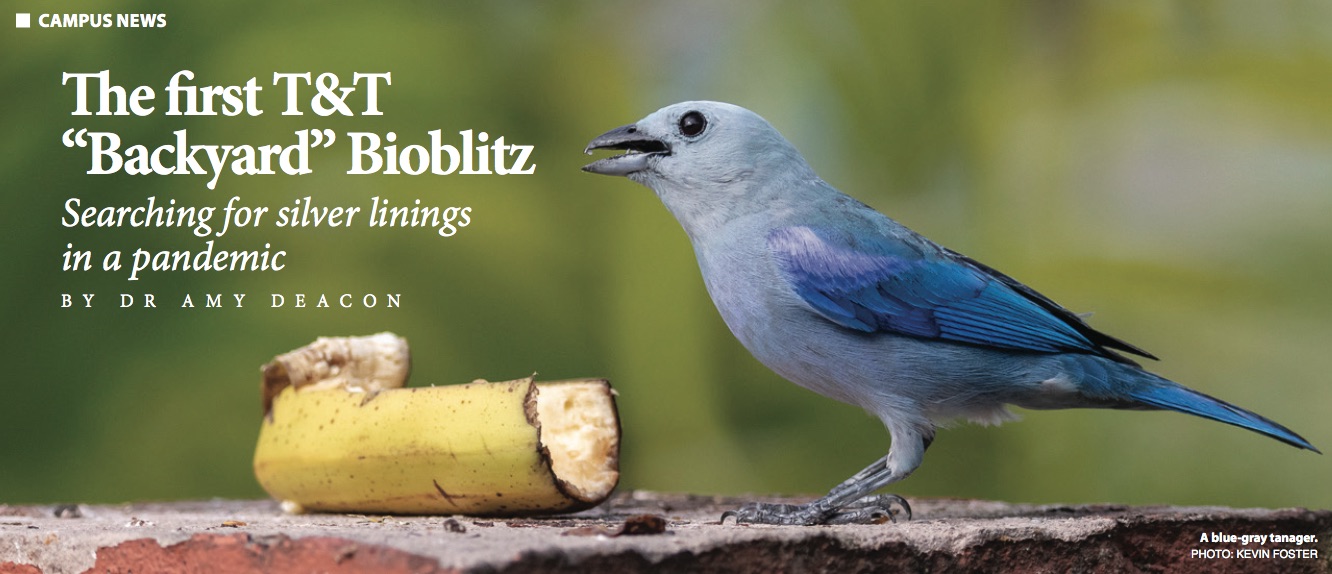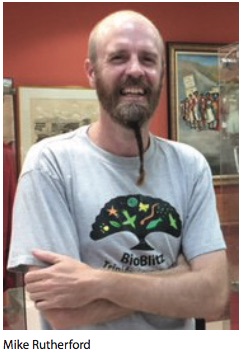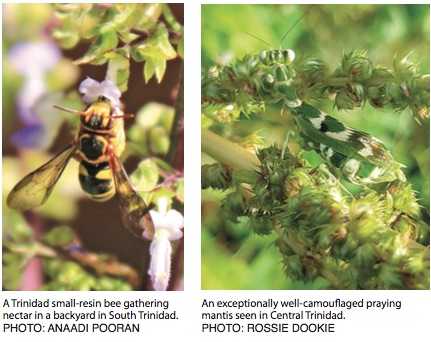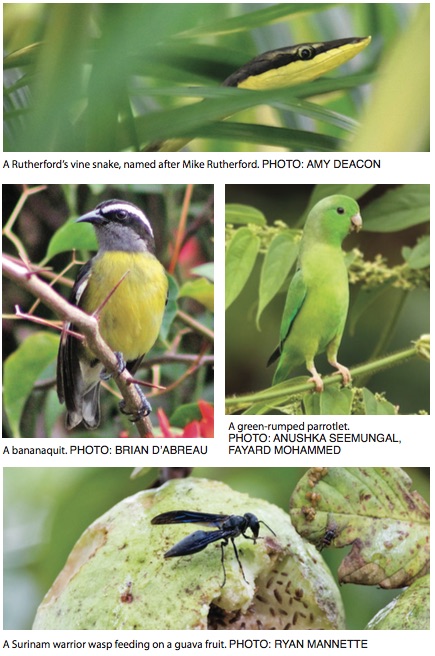
A bioblitz is an event where experts and members of the public join forces to find and identify as many different species as possible within a defined area during 24 hours. The purpose is twofold: to document and learn more about the biodiversity in an area, and to engage the public with their local biodiversity.

The first Trinidad and Tobago Bioblitz took place back in 2012, in Tucker Valley, Chaguaramas. It was the brainchild of Mike Rutherford, who at the time was the Curator of UWI St Augustine’s Zoology Museum. The event was co-organised by the T&T Field Naturalists’ Club (TTFNC) and the Department of Life Sciences (DLS).
It was an unprecedented success, bringing together more than 100 scientists, wildlife enthusiasts, students and interested members of the public to see how many different species of plants and animals could be recorded in a 24 hour period in the area. The answer: a lot! More than 600 species were found that weekend, and every bioblitz in the 8 years since the first has exceeded this total. In Charlotteville, Tobago in 2015, the total exceeded 1000 species. Other locations have included the Arima Valley, Nariva Swamp, Icacos, Toco, Tabaquite and Port-of-Spain.
This year the organising committee (consisting of members of the DLS and the TTFNC — all UWI DLS staff or alumni) were faced with a daunting task — planning an event in a pandemic with much uncertainty about what would be safe or permitted. However, rather than postponing the event or risking cancellation, we decided to embrace the limitations and turn the 9th T&T Bioblitz into a "Backyard" Bioblitz, that people could take part in from the safety of their own home and garden.

The virtual nature of the event was made possible thanks to the brilliant free app – iNaturalist. By simply uploading a photo of a plant, bird, insect etc, the app’s algorithm gives its users as close a match as possible to what type of organism they have found, then local and international experts chip in to help get it down to a species with more confidence. For the T&T Backyard Bioblitz, the DLS created a project page within the app to gather all observations from the event in one place so that participants had only to install the app and take photos of all the living things in their backyard – from kiskadees to bachacs to chadon beni.
On the very rainy weekend of November 21, more than 200 people across T&T ventured into their backyards and started uploading photos. Within a few hours, there were hundreds of observations accumulating on the project and, by the end of the 24hrs, there were nearly 7000 uploads, representing an estimated 1,400 species - the highest total ever recorded in the 9 years of T&T Bioblitz.

In addition to the usual naturalists and interested members of the public taking part, many schools incorporated the T&T Backyard Bioblitz into their virtual lessons. Countless current and former UWI students also joined in. All participants received complimentary stickers, courtesy of Mr Mitchel De Silva, and those meeting targets in certain categories received laminated field guides as prizes, courtesy of TTFNC.
While the hope is to resume “on location” bioblitzes as soon as it is safe to do so, the success of the virtual event paves the way for additional Backyard Bioblitz events to be held in T&T, even once restrictions ease. Amidst the shutdowns and stay-at-home orders brought by the global pandemic, members of the public were able to appreciate and learn more about the biodiversity right on their doorsteps, showing enthusiasm and curiosity for the life that coexists with them.